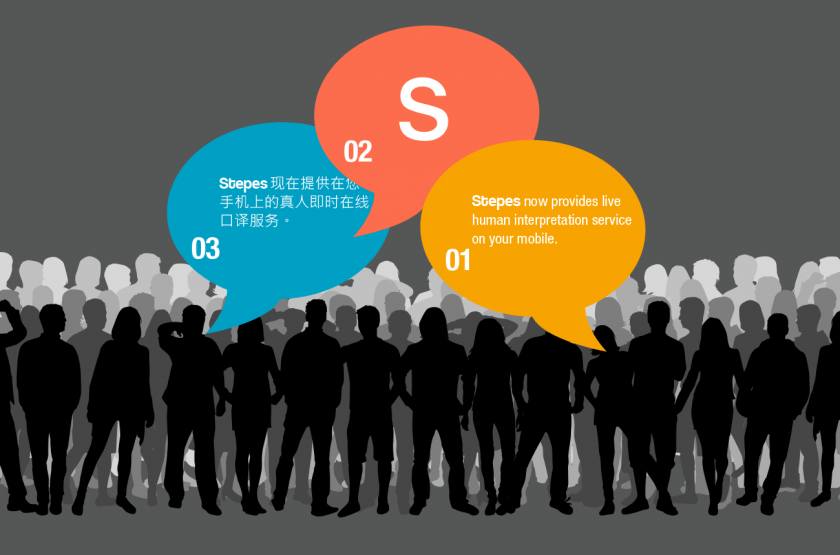The Dialectics of Audio Translation
- Emily Feng
- August 1, 2016
- 13,413 views

One of the fastest growing areas in the language industry right now is the demand for audio translation and live translation. However, the biggest constraints for the industry’s future growth come from within the industry itself.
That’s why Stepes will soon launch its One-on-One service, so as to address the exploding demand for on-demand language solutions. With One-on-One, anyone can request and immediately hire a language specialist for up to an hour. The language specialist can then deliver immediate text, audio, or visual translation through the user’s smart phone. Finding, hiring, and paying a language specialist can now happen all through the Stepes app on your smart phone, meaning you can finally achieve multilingual communication wherever and whenever you want.
The globalization of businesses, financial services, and marketplaces has made multilingual communication more pressing of a need than ever. Meetings between international partners require simultaneous interpretation. Internal communication between executives and workers within multinational companies require immediate translation. Employees, public servants, or even soldiers dispatched to new and unfamiliar linguistic situations need direct language assistance and language learning tools. The needs for audio and live translation are varied and widespread.
Moreover, governments have also realized that live translation is something necessary to functioning governance in the global age. In the US, translation into the major languages spoken by local constituents is actually legally mandated if a significant portion speak another language as their primary language.
The result is that the live interpretation industry has become a multibillion dollar industry that is fast growing. However, the constraints the language industry now faces come internally rather than externally, where finding qualified language specialists and being able to provide services affordably and efficiently to a dispersed global market has proved difficult.
Moreover, existing language options fall short of the diverse language needs of global businesses or individual users. For example, most large language companies and machine translation systems only service the world’s mainstream languages. Major dialects or less common languages are left unaddressed, despite the collectively large numbers of people who speak such languages.
During localization and interpretation process, where contextual subtleties and language nuances are crucial for conveying the right message across audiences, the inability to provide customers with on-demand quality services in all languages and dialects, even less mainstream ones, is a serious challenge the language industry must address.
That’s why Stepes’ One-on-One service is arriving just in time. As nearly all of the most successful businesses and brands go global, they will need on-demand language alternatives, where the ability to find the right language specialist for increasingly diverse language needs can make the difference between beating or caving in to the global competition. Moreover, with the rise of user-generated and digital content (think social media, user reviews, and personal content being generated online), the ability for the language industry to deal with slang, dialects, and other non-standard forms of communication will need to be stronger.
Consider the significance of the differences between Mandarin and Cantonese. Widely spoken in mainland China, spoken Mandarin and Simplified Chinese characters are what most people think of when they translate in to Chinese. However, customers and clients in Hong Kong largely speak Cantonese (if not English) and might actually be offended at the mistaken use of Mandarin at meetings or on printed materials.
Machine translation systems like Microsoft Translator have started to catch on to this trend, offering text translations of major dialects like Cantonese. However, as we have discussed in previous posts, machine translation is not suitable for customer-facing content. Moreover, audio translation and interpretation is where this is definitely not able to serve audio translation, where attention to dialects and specialized vocabulary is more needed.
Get ready for Stepes One-on-One when it hits both the Google Play and iTunes stores!









